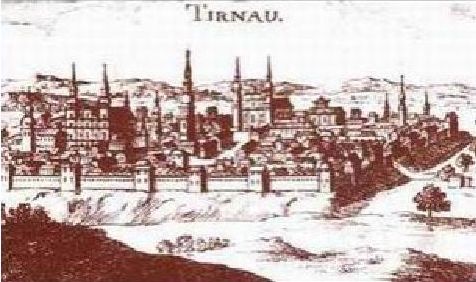 Trnava is situated in fertile plain of Trnava range hills, 50 km from the capital city Bratislava. Trnava was the first town in (present-day) Slovakia to be granted by the Hungarian King Belo IV free royal town privileges in 1238. In the second half of the 13th century the citizens have built the first town fortifications and more late the stone fortifications with the ramparts and four gates in order to defend their property.
Trnava is situated in fertile plain of Trnava range hills, 50 km from the capital city Bratislava. Trnava was the first town in (present-day) Slovakia to be granted by the Hungarian King Belo IV free royal town privileges in 1238. In the second half of the 13th century the citizens have built the first town fortifications and more late the stone fortifications with the ramparts and four gates in order to defend their property.
In the 16th century Trnava became a spiritual and cultural centre of the country. The Turkish armed forces have occupied the chapter of Gran (Esztergom) and the most important ecclesiastical dignitaries of the Kingdom of Hungary settled in Trnava in 1543. In 1561 the archbishop Mikulaš Oláh invited the Jesuits to Trnava, in order to developed the municipal school system. Oláh opened in 1566 the seminary and with the help of Jesuits he tried to improve the higher education.
The 17th century represents a gold chapter in the town’s history, which is connected with the establishment of the University by Peter Pázmany in 1635. Within 142 years this first comprehensive University in the multi-ethnic Kingdom of Hungary helped to spread knowledge all over the country. According to the establisher’s will, Trnava University offered education to all nationalities living in Hungary. But according to a decree by the Empress Maria Theresa, the university was moved in 1777 to Buda and Trnava lost its previous importance. After the seat of the archbishopric moved back to Gran and the university moved to Buda, the importance of Trnava decreased.
At he end of 18th century was codified by Catholic priest Anton Bernolák the first standard Slovak language based on the Slovak dialect used in the region of Trnava. Bernolák established the main stand of Slovak Learned Society (Slovenské učené tovarišstvo) in Trnava to publish and distribute books in this first standard Slovak language. Trnava is deeply connected with the first cultural and educational union in Slovakia, the Slovak Learned Society, developed in the years 1792-1797 and the Society of St. Adalbert (Spolok sv. Vojtecha), founded in 1870, which has covered not only religious, but also national, educational and instructional role.
After the establishment of Czechoslovakia in 1918, Trnava became one of the most industrialized cities of Slovakia. In 1993 was established the Slovak republic and in 1996 Trnava became the capital of one of the eight Slovak administrative regions. The Slovak national council passed in 1992 a Law establishing the Trnava University which opened the new chapter in the town’s and university's history.
